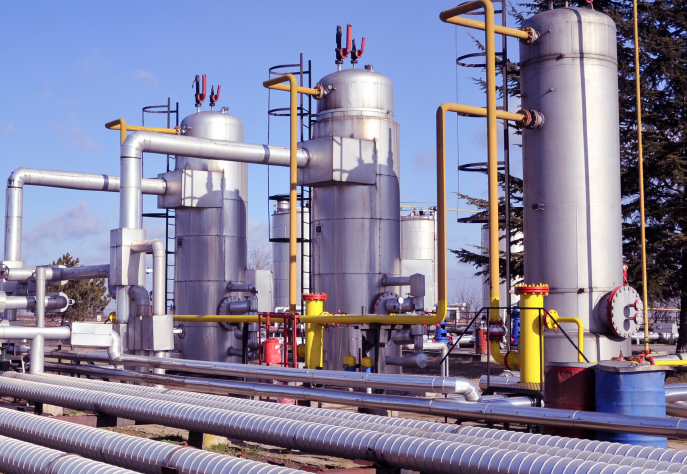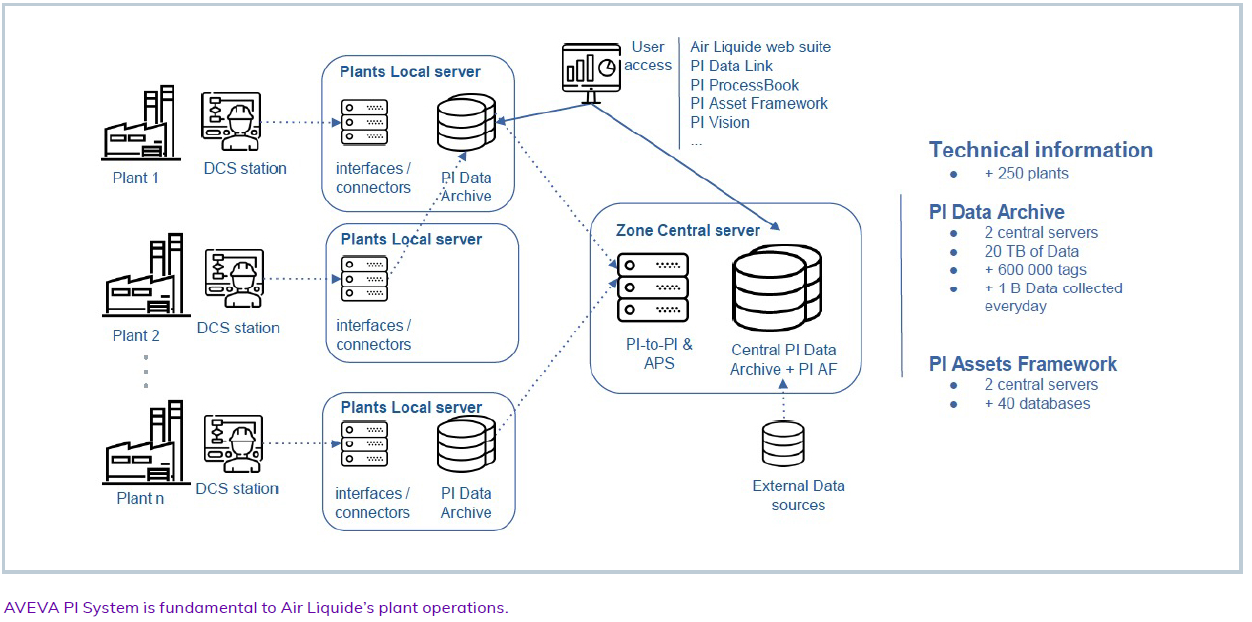Goal
- Integrate real-time data to optimize operations of pipeline network and gas production facilities
Challenge
- Air Liquide collects a billion data streams daily from equipment spread out across 80 countries
Result
- Reduced carbon emissions and energy consumption, enabling Air Liquide to gain operational savings 10 times greater than the initial cost of a project

“The beauty of using Asset Framework is that we can do the job one time and then deploy quickly to all the same category of machine.” - Guoning Zhang Performance Analytics Manager, Air Liquide
Background
In 2017, Air Liquide, a worldwide leader in industrial gases, began opening remote operation control centers (ROCCs) around the world to monitor and respond to plant conditions in real time. These centers connect plant operators, remote analysts, and industry experts who work together to identify potential machine failures and find ways to optimize plant performance.
Every day, Air Liquide collects over a billion data streams from thousands of pieces of equipment spread across 80 countries. Using AVEVA PI System, the company optimizes operation of its pipeline networks and gas-production facilities spread across eight countries in Southeast Asia.
Striving for better reliability and efficiency
Air Liquide serves about 3 million customers across multiple industries, including medical supply providers, oil and gas producers, and chemical and electronics manufacturers. Large Industries, a global business line of Air Liquide, operates hundreds of plants that primarily produce oxygen and hydrogen using air- separation units and steam methane reformer units. In 2015, Large Industries launched its Smart and Innovative Operations (SIO) initiative with two clear goals: eliminate unplanned shutdowns and double the efficiency gains of its gas production plants by 2020.
Air Liquide’s SIO initiative is divided into four key streams: SIO.Drive, SIO.Predict, SIO.Optim, and SIO. Perform. Olivier Rioux, an SIO initiative project manager for Air Liquide, said that the company obtained dramatic efficiency savings that paid for the project within three months by applying a new algorithm to operations data gathered by AVEVA PI System. Within eight months, Air Liquide’s operational savings were 10 times greater than the initial cost of the project. AVEVA PI System helped it achieve results for the initiative’s SIO.Optim pillar, which focuses on using real-time data to enhance operational decision-making and analytics. “All the power of [AVEVA PI System] and what we can do is really huge,” said Rioux.
Facilitating access to real-time and historical data
“All these optimization efforts for SIO.Optim require data,” said Guoning Zhang, a performance analytics manager at the recently opened ROCC in Malaysia. The facility has over 700 users across Southeast Asia who access 10 years of historical operations data, as well as real-time data, stored in AVEVA PI System.
Analysts at the ROCC compare real-time and historical data to monitor plant performance and define and apply the most efficient settings for each production unit. They also use data to identify potential machine failures, schedule preventive maintenance, and look for ways to optimize the operational configurations of their pipeline networks.
One such pipeline network in Singapore stretches over 124 miles and connects five production units, supplying oxygen, nitrogen, and hydrogen to customers. These pipelines contain many rotating compressors, which maintain pressure and flow throughout the system. Varying in age, compressors from various manufacturers can have very divergent operational profiles and performance. “It’s really hard to figure out in real time without data what the best combination [of equipment] is,” Zhang said. “That’s where SIO. Optim comes into the picture.”
Performance analysts at Air Liquide’s ROCC in Malaysia – working in partnership with Alizent, a system integrator – used asset framework, a contextualization layer of AVEVA™ PI Server, to generate a digital twin model of the pipeline network. With asset framework, users can, using metadata, link key related attributes together into a unified hierarchy of all their equipment. Relying on asset framework-based analytics, ROCC engineers can calculate KPIs in real time and identify the best combination of compressors to minimize power consumption and reduce the carbon footprint.
AVEVA PI System also allows ROCC engineers to easily connect their data to the other types of advanced analytics solutions such as Seeq and AIMMS. “We have powerful in-house tools and partner tools connected to PI,” Zhang said. “With the help of all these systems, we are optimizing our plant in an efficient manner.”

Leaving limits behind
Recently, Air Liquide signed an Enterprise Agreement (EA) to expand its capabilities with AVEVA PI System. “This is good news,” said Jayakumar Manoharan, smart manufacturing technology manager for Air Liquide. “With this Enterprise Agreement, there is no longer any limitation for us. We have unlimited tags, unlimited user tools, and we also have training packages …we’re boosting up our SIO projects, interconnecting various solutions, collecting more data from the field, and visualizing more data.”